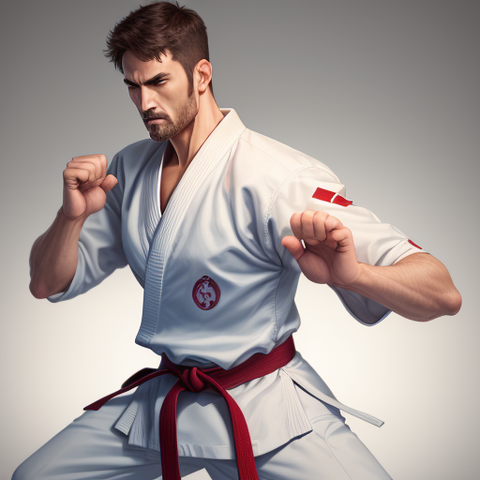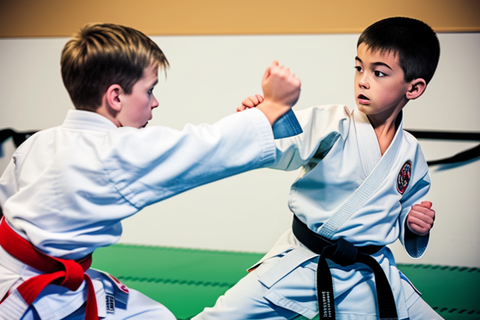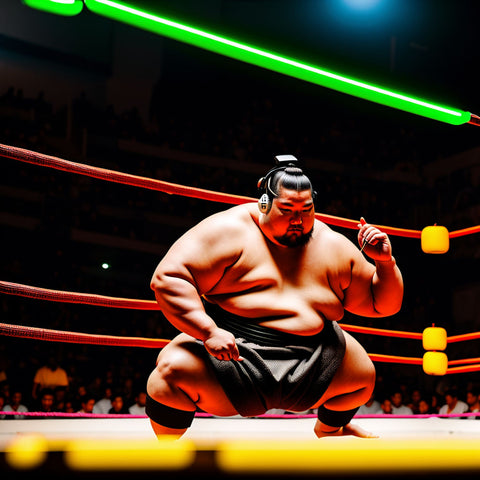Origins of Sumo Wrestling: A Journey Through Time

My interest in sumo's origins deepened when I had the opportunity to visit Japan and witness a sumo tournament firsthand.
The atmosphere in the arena was electric, and the rituals surrounding each match were awe-inspiring. From the moment the wrestlers entered the ring with their precise and deliberate movements to the ceremonial salt tossing, it was evident that sumo's ancient traditions were very much alive and cherished.
When did sumo start? Sumo wrestling, one of the world's oldest sports, originated in Japan with its roots traced back to the early 8th century. Initially, it was a form of ritualistic entertainment associated with Shinto ceremonies, gradually evolving into a more organized sport during the Edo period (17th-19th centuries). The first professional sumo organization, "Edo Sumo," emerged during this time, paving the way for the modern sumo we know today.
- Heian Period (794-1185): Sumo's early development can be observed during the Heian Period, with references in historical texts like the "Nihon Shoki" and "Kojiki." It was during this time that sumo began to take on a more structured and organized form, moving beyond its purely ritualistic origins.
-
Kamakura and Muromachi Periods (1185-1573): Sumo continued to gain popularity during the Kamakura and Muromachi periods, becoming an essential part of court entertainment and martial arts training for samurai. Sumo matches were often held at temples and shrines.
-
Edo Period (1603-1868): The Edo period saw significant developments in sumo wrestling. The first professional sumo organization, known as "Edo Sumo," was established. Sumo tournaments were held regularly, attracting large crowds and becoming a form of popular entertainment. During this period, sumo started to resemble the structured sport we know today, with rules and regulations.
-
Meiji Restoration (1868): The Meiji Restoration marked a period of modernization and change in Japan. Sumo was not immune to these changes, and it underwent reforms to adapt to the new era. The sport was further codified, and the modern rulebook was established.
-
Post-World War II: After World War II, sumo underwent significant restructuring. The system of promotion and relegation based on performance was formalized. Sumo wrestlers, or "rikishi," were divided into different divisions, with the top division being the "Makuuchi." This post-war period saw the emergence of legendary sumo wrestlers who became household names in Japan.
In my opinion, the origins of sumo wrestling are not just a historical curiosity but a fascinating glimpse into the rich tapestry of Japanese culture and tradition. The evolution of this ancient sport from religious rituals to a highly organized form of entertainment is a testament to the enduring power of tradition and the adaptability of human practices over time.
Ever wondered how Sumo wrestlers earn their ranks or what it takes to reach the coveted title of Yokozuna? Dive into the world of Sumo Wrestling with this captivating guide to its intricate hierarchy. Click on the link to unravel the mysteries of Sumo's rankings and gain a deeper understanding of this ancient and revered sport.
One of the most intriguing aspects of sumo's origins is its connection to Shinto ceremonies. It's remarkable to think that what we now know as a fierce and competitive sport had its roots in the reverence of the gods. This connection to spirituality adds a layer of depth to the sport that sets it apart from many other forms of combat. Sumo is not merely about physical prowess; it embodies a spiritual and cultural dimension that is deeply ingrained in the Japanese psyche.
-
8th Century Beginnings: Sumo wrestling can be traced back to the 8th century, with the earliest documented records appearing in historical texts from that time, showcasing its remarkable longevity.
-
Shinto Connection: Sumo's roots are deeply intertwined with Shintoism, as it originally served as a form of ritualistic entertainment to entertain the Shinto deities. The sport's spiritual connection adds a unique dimension to its history.
-
Edo Period Development: During the Edo period (17th to 19th centuries), sumo underwent significant developments, including the establishment of the first professional sumo organization known as "Edo Sumo," marking a critical phase in its evolution.
-
Modern Rulebook: In the late 19th century, sumo underwent further reforms, leading to the creation of the modern rulebook and structure of the sport. This set the stage for the contemporary sumo wrestling we know today.
-
International Recognition: While sumo is deeply rooted in Japanese culture, it has gained international recognition and popularity, with wrestlers from around the world competing in professional sumo tournaments, highlighting its global appeal and influence.
During my visit, I also learned about the rigorous training and strict lifestyle that sumo wrestlers endure. The dedication required to excel in this sport is truly remarkable. It made me appreciate the discipline and commitment of these athletes even more, knowing that they are carrying forward a tradition that stretches back over a thousand years.
Curious about the different sizes of athletes who dominate the world of Sumo Wrestling? Discover the astonishing facts about the average weight and height of these giants who grapple in the ring.
In conclusion, the origins of sumo wrestling are not just a historical footnote but a captivating story of cultural evolution. It is a sport that bridges the gap between the ancient and the modern, reminding us of the enduring power of tradition in our rapidly changing world. Sumo wrestling's origins and its continued popularity serve as a testament to the resilience of Japanese culture and the profound impact of tradition on the human spirit.
Have you ever wondered about the financial rewards of the mighty Sumo Wrestlers? From the lavish lifestyle of Yokozuna to the financial struggles of newcomers, this article provides an eye-opening look into the rewards of Sumo Wrestling.
Sky Hoon. About
Martial Art Fan
He started his love on martial arts by watching MMA and Angela Lee. He then started this blog to learn more about the different martial arts.
Other Posts By Author








